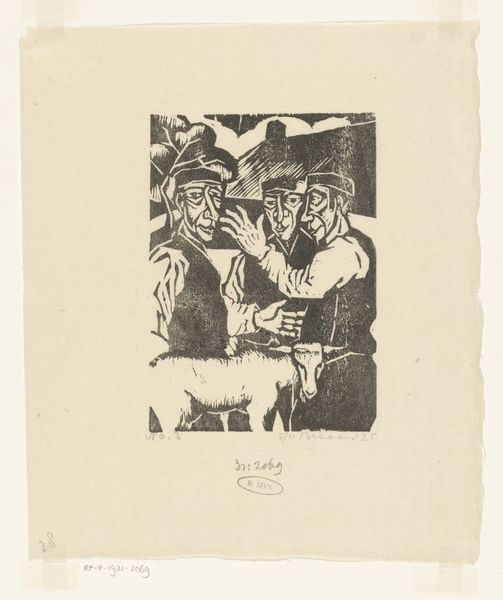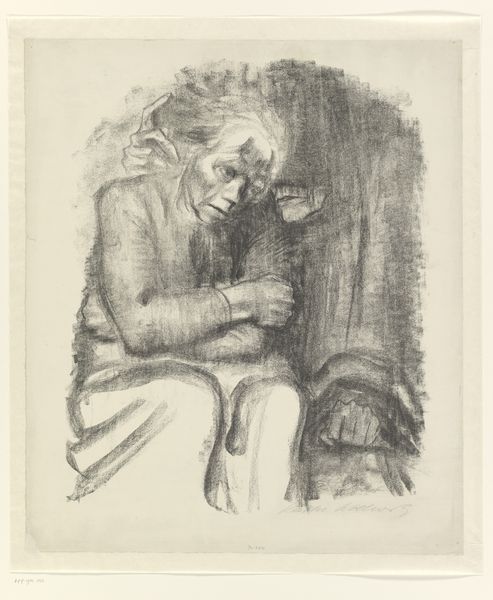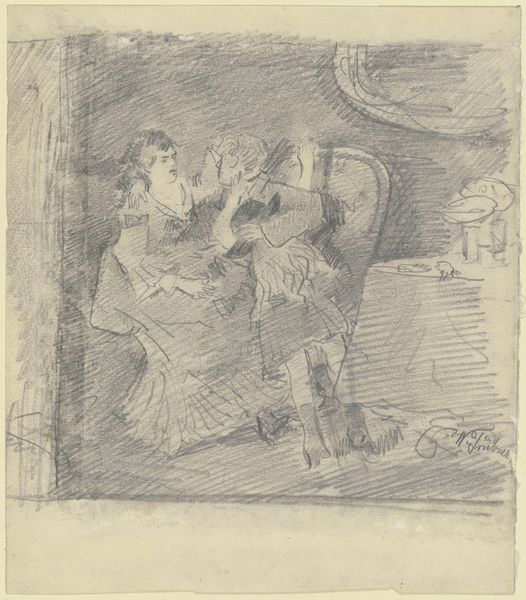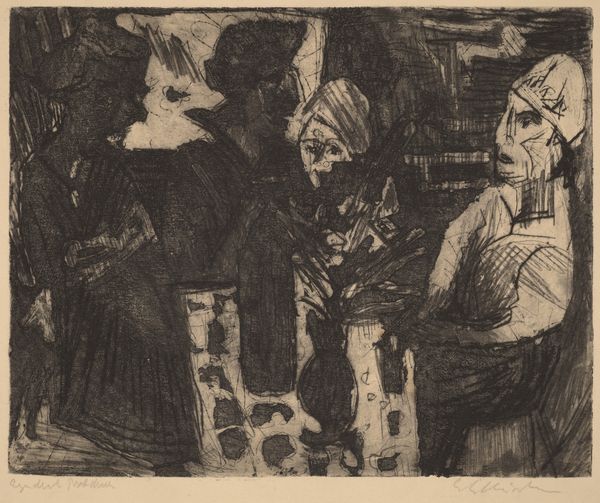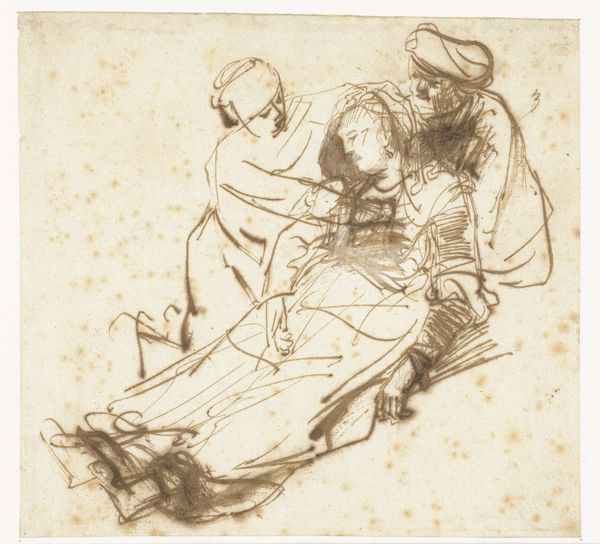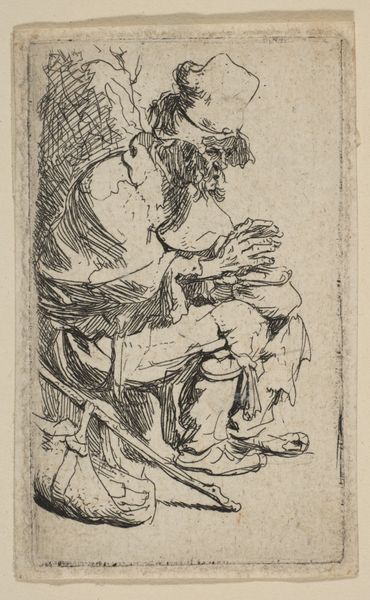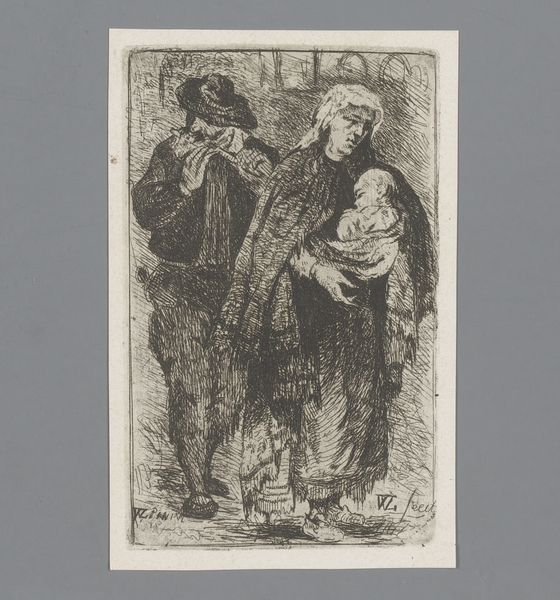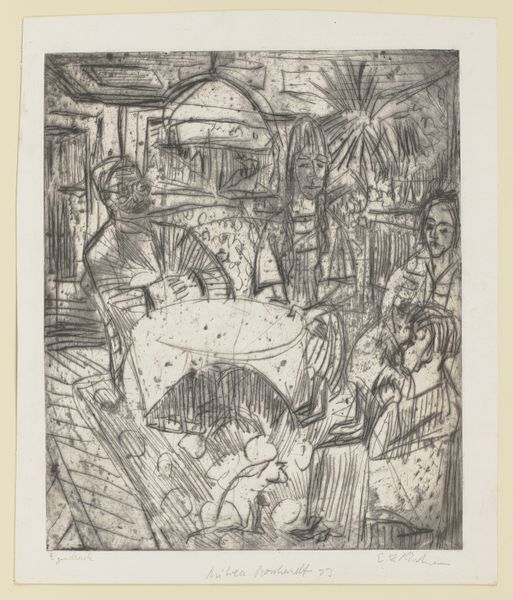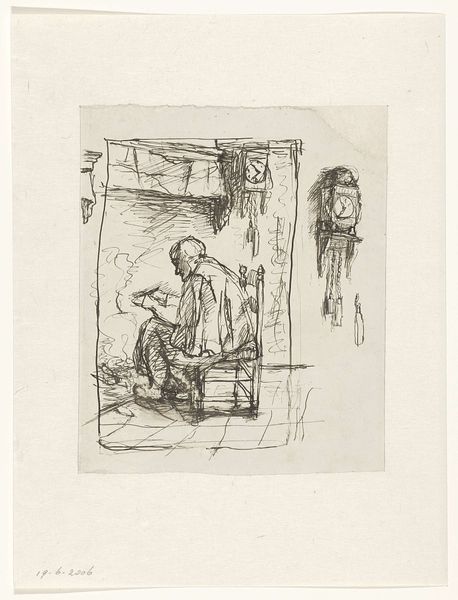
drawing, etching
#
portrait
#
drawing
#
etching
#
pencil sketch
#
expressionism
Copyright: Public Domain
Editor: So, this is Ernst Ludwig Kirchner's "Sitzender Alter mit Glas," or "Seated Old Man with Glass," created in 1919. It’s an etching, a pretty somber portrait in shades of gray. What do you see in this piece? Curator: I see a deeply layered commentary on aging and societal displacement in post-war Germany. Kirchner, part of the *Die Brücke* movement, often used distorted forms and intense emotion to critique bourgeois society. Consider the subject; an older man, possibly a veteran, sitting alone with a glass. What narratives are being woven here? Editor: I guess I just saw an old man; I didn’t really consider his potential historical context. Curator: Exactly. What if we consider his solitude as a reflection of the societal alienation felt by many returning soldiers, who were promised a hero’s welcome but met with indifference and unemployment? Look at the lines – the agitated etching suggests unease. What does the glass in his hand signify to you? Editor: Perhaps escapism, or a coping mechanism? A need to dull the harsh realities he faces. Curator: Precisely! And consider Kirchner's own struggles with mental health and addiction. Is he projecting his inner turmoil onto this figure? Is the artist seeing himself? Understanding this artwork involves situating it within these socio-political and deeply personal contexts. We see an intersection of ageism, the aftermath of war, and personal despair. Editor: I never thought about it that way. It makes the image far more powerful. Curator: It’s about seeing beyond the surface, isn’t it? This exploration really reveals how art reflects, critiques, and even embodies the anxieties of its time. Editor: Thanks, I have a much better grasp of what this work is about now!
Comments
No comments
Be the first to comment and join the conversation on the ultimate creative platform.
